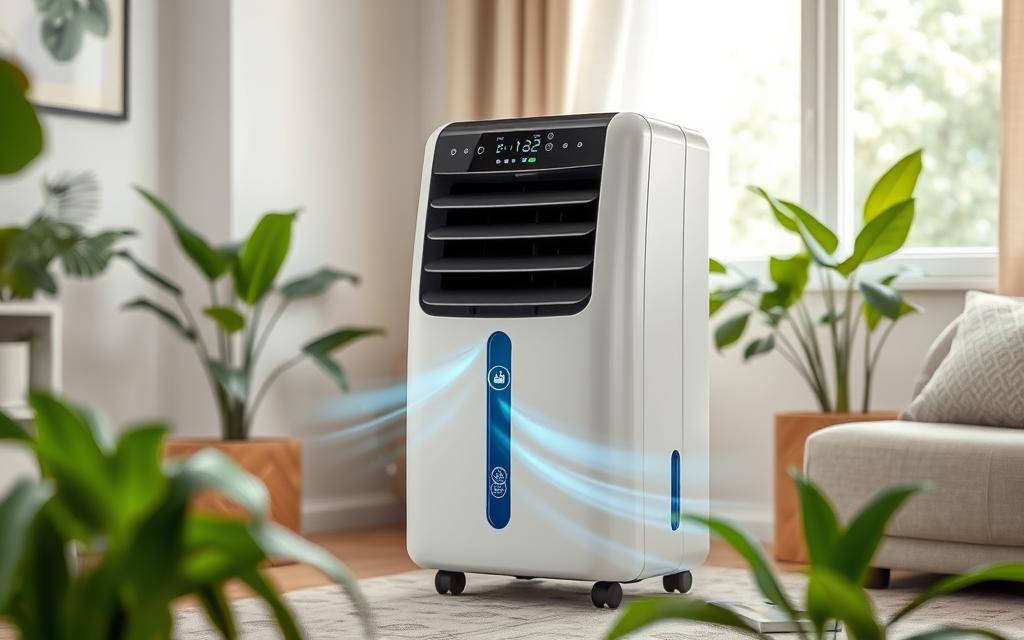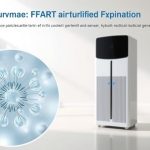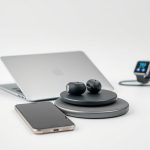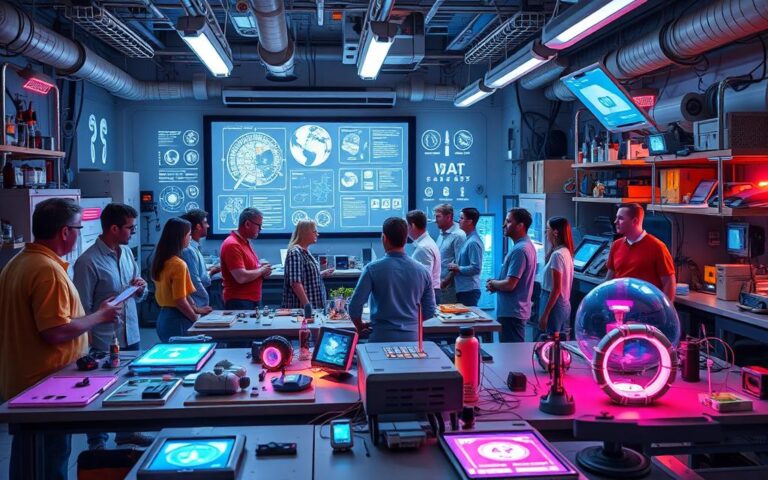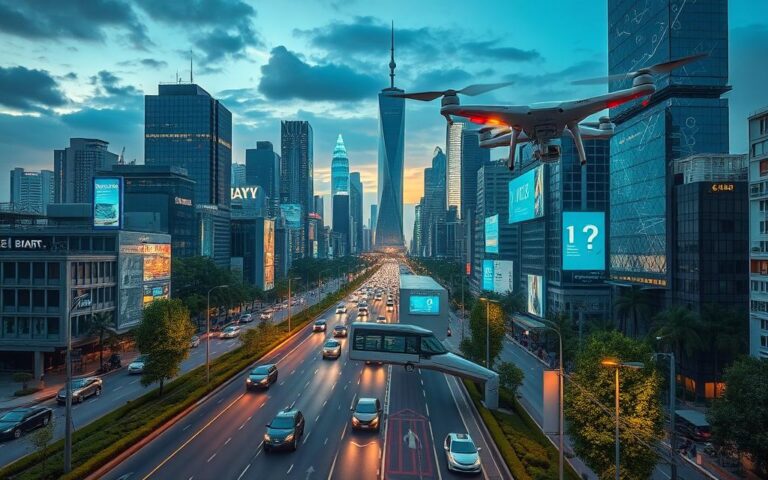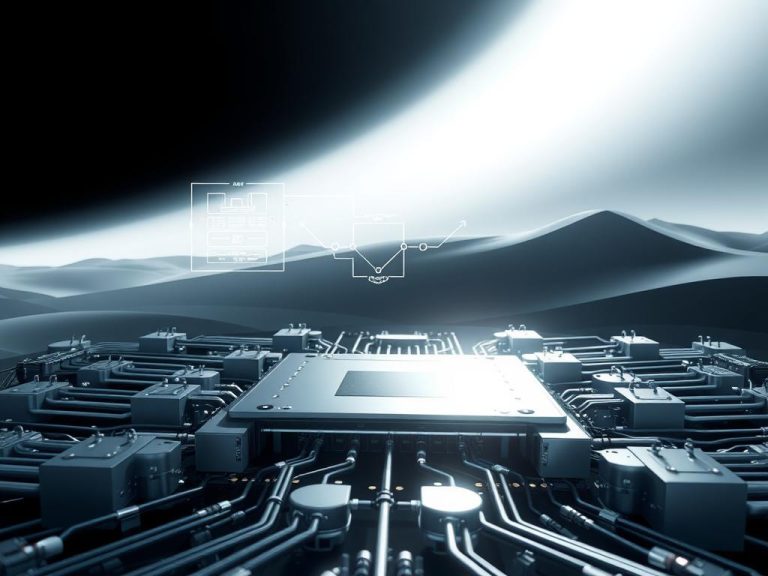Inverter Technology in Dehumidifiers: What You Need to Know
In recent years, inverter technology has changed how we manage moisture at home. This technology improves dehumidifiers by accurately controlling the compressor speed. This leads to better energy use and moisture control. Unlike traditional units that often lag, causing temperature swings, inverter models keep the temperature and humidity stable all day.
These advanced dehumidifiers adjust based on humidity levels, providing optimum comfort and reducing energy use. Traditional dehumidifiers often fail to remove enough moisture, making indoors feel uncomfortable. But with inverter technology, the air quality stays consistent. For more details on how inverter tech works and its benefits for HVAC systems, check out more here.
Understanding Inverter Technology
Inverter technology is now key in HVAC systems, changing how we manage heating and cooling. It relies on an advanced control that adjusts the power to the compressor’s motor. Unlike old systems that only turn on or off, inverters can change speeds smoothly.
Definition of Inverter Technology
At its heart, inverter tech lets the compressor adjust its speed. This makes HVAC systems more flexible, keeping the temperature and humidity just right. Not only does this improve comfort, but it also saves energy. This makes inverter systems a top pick in many places.
How Inverter Technology Works in HVAC Systems
With inverters, compressors start slowly and don’t always run at full blast. This reduces the usual temperature spikes, keeping things stable, especially in damp climates. Being able to keep steady indoor conditions means big energy savings. In fact, inverter systems can use about 30% less electricity than others.
What is Inverter Technology in a Dehumidifier
Dehumidifiers with inverter technology are a big step up from older models. They work to keep the air just right. This means they use less power and make your home more comfy.
Comparison with Traditional Dehumidifiers
Old school dehumidifiers turn on and off a lot. This makes room humidity jump around. Inverters change the game by adjusting to the air’s moisture in real-time. This way, they provide steady moisture control.
Thanks to this, they can run smoothly all day. You won’t see the sudden stops and starts typical of traditional units.
Advantages of Inverter Technology in Dehumidifiers
Inverter models are great for saving energy. They match their power use to the humidity around. This cuts down on your electric bill and boosts comfort. Plus, they’re way quieter than old models.
They don’t make that loud noise when they start. This means you enjoy a peaceful and comfy space, no matter the weather outside.
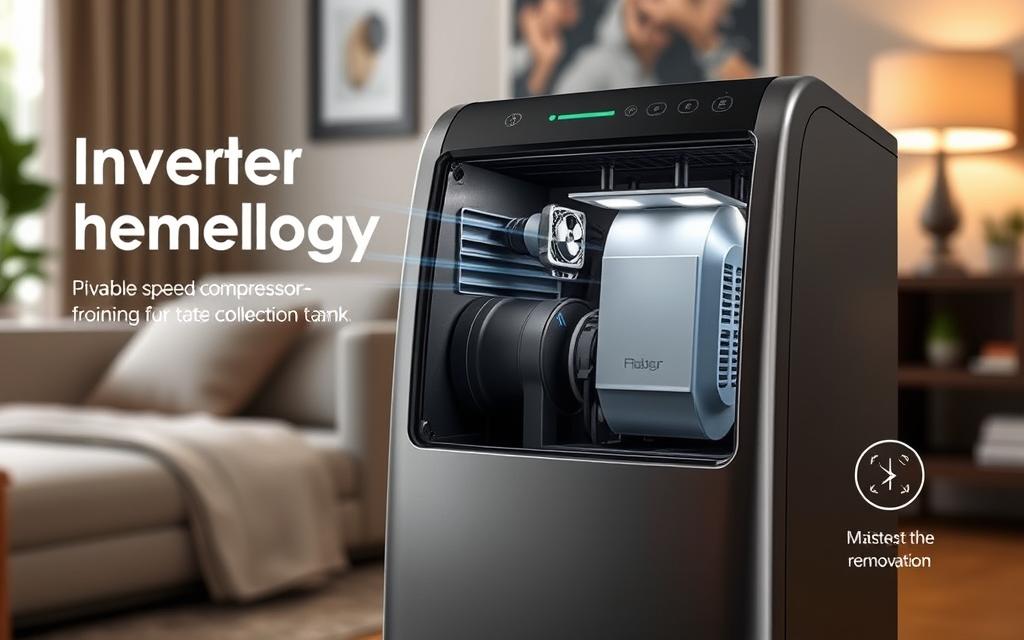
Benefits of Inverter Technology in Dehumidifiers
Inverter technology improves dehumidifiers significantly. It makes them a top choice due to better efficiency and moisture control. Energy use drops, and comfort increases.
Energy Efficiency and Cost Savings
Dehumidifiers with inverter technology save up to 40% energy. This means lower electricity bills. Their compressors adjust speed, avoiding energy spikes. This saves money and helps our planet.
Improved Moisture Control
Inverter dehumidifiers manage humidity well. They keep it between 30% and 50%. This steady level boosts air quality, preventing mould and bad smells.
Lower Noise Levels
These dehumidifiers are also quieter. They work at around 35 decibels – that’s as quiet as a library. This makes homes more peaceful, especially in bedrooms.
| Feature | Inverter Dehumidifiers | Traditional Dehumidifiers |
|---|---|---|
| Energy Efficiency | Up to 40% savings | Standard efficiency |
| Noise Levels | As low as 35 decibels | Higher noise levels |
| Moisture Control | Continuous operation with precision | Intermittent operation, less stable |
Types of Dehumidifiers Using Inverter Technology
There are different dehumidifiers using inverter technology. They include compressor and desiccant types. Each works differently and suits various places, depending on the moisture.
Compressor Dehumidifiers
Compressor dehumidifiers work like air coolers. They use a refrigerant to pull water from the air, cutting down humidity. With inverter tech, they adapt their speed as needed. This action ensures stable moisture removal and saves energy over time.
Desiccant Dehumidifiers
Desiccant dehumidifiers use materials like silica gel to absorb moisture. Though not traditionally using inverters, new designs do. Adding inverter tech helps them use energy better depending on the moisture, offering steady control.
| Type of Dehumidifier | Operating Principle | Benefits |
|---|---|---|
| Compressor Dehumidifiers | Use refrigerant to condense moisture | High energy efficiency, continuous dehumidification |
| Desiccant Dehumidifiers | Absorb moisture using desiccant materials | Effective in low temperatures, quieter operation |
When choosing a dehumidifier, think about your space and drying needs. For help picking the right one, check this detailed guide. It will help you understand their uses and ensure you select the best model for your needs.
Factors to Consider When Choosing an Inverter Dehumidifier
Choosing the right inverter dehumidifier is key. Think about your home’s specific needs. This way, you’ll improve results and ensure it works well.
Dehumidification Capacity
How well a dehumidifier works depends on its capacity. For example, in Hong Kong, a small room of 150 square feet needs an 11-litre capacity. A larger area, like 700 square feet, would require about 28 litres. It’s crucial to match this with your room size for best moisture control.
Energy Rating and Efficiency Standards
The energy rating affects cost and the environment. Look for dehumidifiers that meet ANSI/AHAM standards. They work well at 26.7°C with 60% humidity. Higher-rated units save money in the long run and are a greener choice.
Additional Features and Functions
Many inverter dehumidifiers offer extra features. Some can link to smartphone apps for easy control over humidity. Look for useful options like automatic humidity adjustment, air cleaning, and modes for drying clothes. Decide which features meet your moisture control needs best.
Conclusion
Inverter technology changes the game for keeping homes dry. It makes dehumidifiers like the LG Dual Inverter work better and quieter. They can pull up to 30 litres of water from the air each day, perfect for bigger rooms.
Thanks to this tech, inverter dehumidifiers use less power. The LG model can save up to 50% on energy, cutting down your bills. Over time, this means big savings and less strain on the planet.
Choosing one of these dehumidifiers means more than just getting a new gadget. It’s about better air at home and saving energy. They’re quieter and adapt to what you need, making life more comfy.
FAQ
What is inverter technology in dehumidifiers?
Inverter technology in dehumidifiers means the compressor can change speed based on the room’s humidity. This makes them more energy-efficient, better at controlling moisture, and improves air quality.
How does inverter technology improve energy efficiency?
Inverter technology increases energy efficiency by adjusting the compressor’s speed instead of turning it on and off. This method reduces energy use and could save 30-50% on energy bills.
What advantages do inverter dehumidifiers have over traditional models?
Inverter dehumidifiers have many pluses compared to traditional ones. They control humidity better, are quieter, and more efficient. They keep moisture levels steady, making the air more comfortable.
Are inverter dehumidifiers quieter than traditional ones?
Yes, inverter dehumidifiers are usually quieter than traditional ones. Their ability to run at different speeds reduces the loud noises found in typical start-up cycles.
What types of dehumidifiers utilise inverter technology?
Compressor and desiccant dehumidifiers use inverter technology. Compressor ones cool air to remove moisture, while desiccant ones use materials to absorb humidity. Inverter technology boosts their efficiency.
What factors should be considered when purchasing an inverter dehumidifier?
When buying an inverter dehumidifier, think about the dehumidification capacity needed for your area and its humidity. Also, check the energy rating and look for features like smart home compatibility and automatic humidity control for extra convenience.

